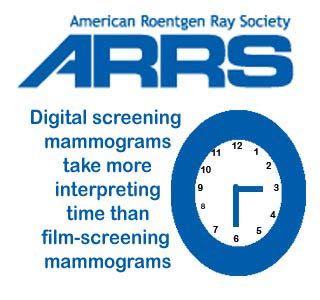
Four radiologists interpreted around 268 digital screening mammograms as well as around 189 film-screen mammograms. Lead author, Tamara Miner Haygood, MD, states that the approximate time taken by their readers to interpret digital and film-screening mammograms were 4 minutes and a little over 2 minutes, respectively.
Dr. Haygood further points out that the digital screening mammograms clearly took the double amount of time as compared to film-screening mammograms.
The study has attempted to zero in on the elements that may contribute to the time difference between these two mammograms. Dr. Haygood says, “Those factors were the identity of the interpreting radiologist, whether there were older studies available for comparison, whether the radiologist looked for and hung up additional films, how many images were obtained and whether the study was normal or not. In each of these situations, the digital images took longer to interpret than the film-screen images.â€
It’s stated that this study may be able to guide the radiologists in selecting the most appropriate form of mammogram screening for their practice, keeping in mind the reading time required by both the screening mammograms. They will have a better idea of how much time is required to read either the digital screening mammograms or the film-screening mammograms.
Dr. Haygood also says that apparently digital screening mammograms propose an accurate and enhanced diagnostics as compared to the film-screening mammograms. Digital screening mammograms supposedly are also easy to store and retrieve.
The study authors suggest that digital equipment manufactures can possibly with the help and guidance of radiologist, enhance the equipment’s reading time and accuracy. They can also try to increase and match up the interpretation time of the digital screening mammograms with the film-screening mammograms.
This study is published in the American Journal of Roentgenology issue.
